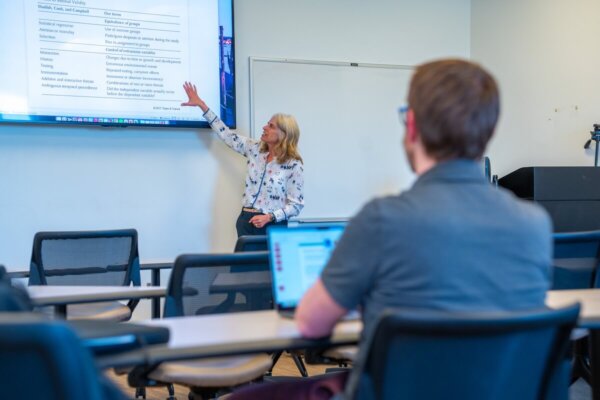Physician Assistant Studies & DMS Programs Showcased
Diversity efforts related to curriculum and more are highlighted

Shenandoah’s Physician Assistant Studies program recently received attention for its efforts regarding inclusion, diversity and equity in an online article published by the PA Education Association (PAEA).
The piece, “EDI in Action: Virginia PA Program Uses DEI Toolkit to Create Achievable and Measurable Goals,” describes the division’s work with the toolkit, and how it worked with the university’s Executive Dean for Creativity and the Arts Michael Stepniak, Ed.D., to present an arts-based inclusion activity that he facilitated with the program. The activity promoted “an examination of observation and perspective through visual art,” the article stated, and it “has been done with all current PA students, faculty and staff in their program providing a unique shared experience for their larger community.
“PAEA encourages PA programs to take after Shenandoah’s lead by using the DEI Toolkit with community stakeholders to create an equity, diversity, and inclusion roadmap tailored to your program’s mission, vision, and values,” the article adds.
In addition, Shenandoah Assistant Professor and Doctor of Medical Science Director Shea Dempsey ’12, D.M.Sc., PA-C, co-authored an article with Nathan M. Lechien ’23, D.M.Sc., PA-C, recently published in The Journal of Physician Assistant Education, “Lesbian, Gay, Bisexual, Transgender, Queer, Plus Curriculum in Physician Assistants/Associate Education: A Call to Action.”
The article states, “Promoting and advocating for LGBTQIA+ inclusion within the existing PA curriculum should be initiated by addressing the following subjects:
- Identifying and addressing personal biases toward the LGBTQIA+ community.
- Understanding hormone replacement therapy.
- Prevention and intervention strategies for sexually transmitted infections.
- Knowledge about pre-exposure prophylaxis.
- Understanding postexposure prophylaxis.
- Defining key LGBTQIA+ terms.
- Learning about patient pronouns and their proper usage.
- Exploring the social structure of the LGBTQIA+ community.
- Examining health inequities faced by the LGBTQIA+ community.”
Read more online at The Journal of Physician Assistant Education.





